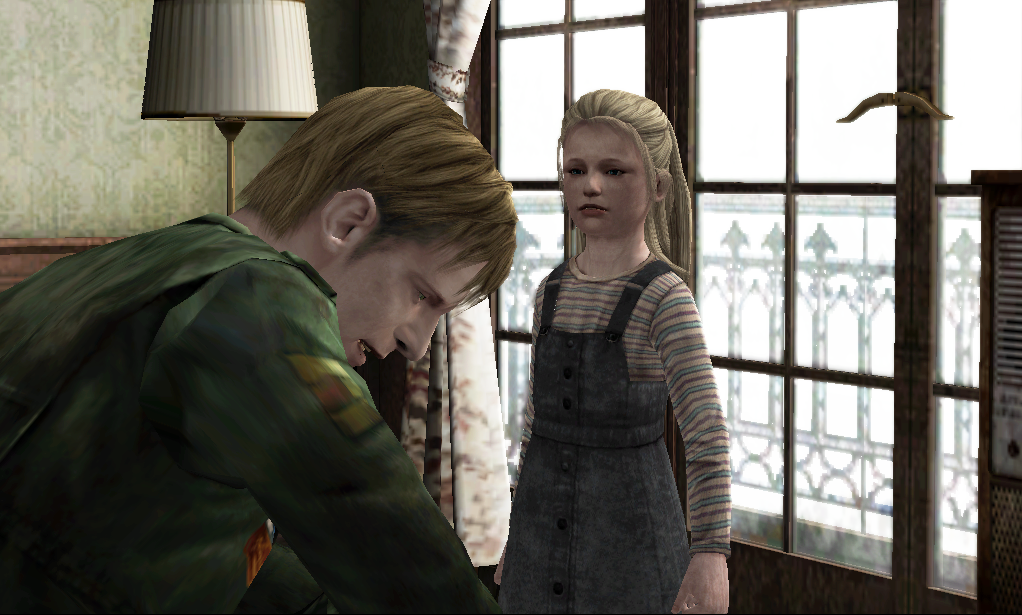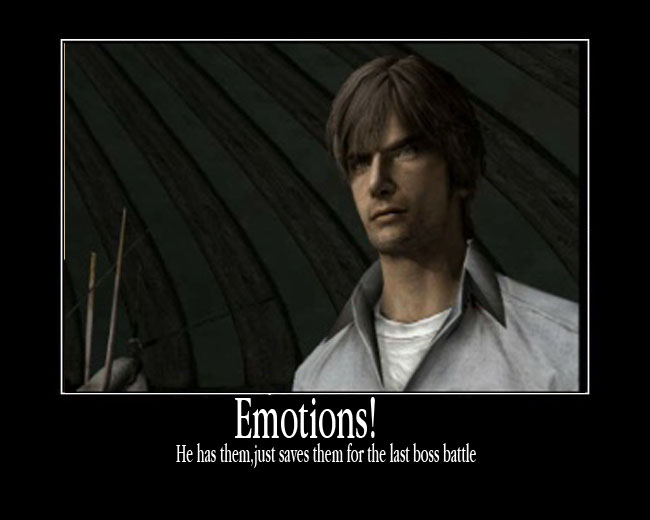Given survival horror’s slow burn nature a good story and other narrative elements can make or break the game. While action horror games can get away with simple narratives such as just trying to survive; the constant waves of enemies and combat systems are usually enough to keep the player hooked. Survival horror games require a narrative with a little more investment. Not only is the narrative itself important but also how it is told. Finally there are other narrative tid bits, such as notes or diaries that might not contribute directly to the story being told at the moment but enrich the overall narrative experience.
We’re All Stories
The player character should have some sort of personal connection in the events surrounding them. This personal connection allows the narrative to be about something more than just surviving; the character progresses through the narrative in order to understand or learn something new about him/herself or the world around him/her. This personal connection allows the narrative experience to be something more than running to point A to point B and still being alive. It becomes a journey of discovery in a way where the player is compelled to move forward not because of survival but to experience the story the game is trying to tell.

Silent Hill 4 is a prime example of a game where the player character has no personal connection to the events taking place and the game suffers for it. You feel nothing for the random guy who just happens to get caught up in Silent Hill’s bullshit. Henry Townshend gets involved simply because he chooses the wrong apartment to move into. Compared to previous Silent Hill titles none of the manifestations of Silent Hill have anything to do with Henry or his psyche. The only tenuous connection Henry has with the events taking place is his unlucky choosing of an apartment and his infatuation with one of Walter’s victim. The player has no investment in the character he/she is playing.

How We Tell Our Stories
If we step away from horror games for a moment we can take a look at competing philosophies on conveying stories to the player and how those choices affect immersion. We will look at two video game franchises and the different ways they approach telling their stories: Mass Effect and BioShock.
The Mass Effect games go for a very cinematic and epic experience. Because of this there are a lot of breaks from the actual game play for cut scenes. For any plot progression there is a cut scene. The makers of the Mass Effect wanted to tell an epic, personal, and engrossing story that the player felt they were a part of but at the same time they wanted the player to be immersed in that epic narrative. The developers presented the player with cinematic cut scenes to convey the epic nature of the narrative but to keep the player immersed the player got choose what their Shepard looked like. Everyone knows the feeling of seeing someone else’s Mass Effect play through and saying to themselves, “That’s not Shepard. My Shepard is Shepard.” In this way the developers could present an epic cinematic effect through cut scenes while minimizing immersion breaking.
In the first Bioshock game the developers wanted the game to be as immersive as possible. Their philosophy was that cut scenes broke this immersion. The only two cut scenes in the game are at the beginning and the end. The game is presented in first person. Throughout the game when narrative progressing scenes take place this perspective is never paused for a cut scene. The player is always in first person, able to move about as things are happening. This method helps keep the player immersed in the setting that is being presented to them.
Both ways discussed above are valid ways of telling a story. While Mass Effect found a way of maintaining immersion with its cut scenes this is not always the case, being pulled out of the flow of game play can break that immersion for some people. What is important to a good survival horror game is immersion and so it may seem that cut scenes may not be the way to go. While I consider Silent Hill 2 to be one of the greatest survival horror games I’ve ever played its cut scenes could be iffy. The cut scenes didn’t always maintain the atmosphere and dread that the in game play did, coupled with slow paced and somewhat monotone voice acting one could easily have their immersion broken with a cut scene. There is also the notorious voice acting of the early Resident Evil games which has you laughing more than feeling the fear you should be.
This doesn’t mean a survival horror game can’t be good and effective with cut scenes just be prepared that some of the immersion might be lost. At the moment most survival horror games use cut scenes but the use of cut scenes should be limited. The escape horror game Amnesia avoids cut scenes itself by letting the player to move around as they experience flash backs. The player isn’t removed from their first person experience instead the environment around them becomes distorted and the scenes are conveyed through audio only. Survival horror games could become truly frightening if they could move the narrative forward without using cut scenes, reducing the chances of breaking the immersion for the player.
Who has the Time to Write All this Shit?
I don’t want to say random tape recordings and notes scattered throughout survival horror games don’t have their place but often they get ridiculous, breaking the immersion because of how absurd they might be. But used effectively they can help enrich the narrative atmosphere. Notes or recordings of someone in their death throes will make me raise an eyebrow. But a diary where its entries become more surreal would be good way of showcasing someone’s descent into Lovecraftian madness thereby enriching the overall narrative atmosphere. They can also be used to enrich and inform the player of what is taking place in the moment. Fatal Frame 2 effectively uses notes and its version of tape recordings to help enrich the environment in which the game takes place.
How a story is conveyed to someone is important in video games if you want that game to be immersive and grip the player with fear as most developers of survival horror games want to do. Looking at how to move the narrative forward, for immersion, cut scenes should be used sparingly. Along with that if one decides to convey narrative enrichment through things like notes and recordings don’t let it become absurd. Avoid things narrative devices/methods that could break the immersion for the player. The goal of immersion in survival horror games is to keep the player locked in a never ending sense of slow burning dread.